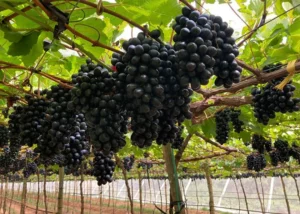In Rio Grande do Sul, the grape harvest faces significant challenges due to adverse weather, leading to a forecasted production decrease.
Despite these hurdles, the grape quality remains high.
The region, known for its critical role in Brazil’s wine industry, relies on the hard work of about 15,000 families, particularly in the Serra Gaucha area.
Heavy rains during critical flowering led to a 25% drop in this year’s harvest volume, especially affecting early grape varieties.
Initial expectations of 719,000 tons for 2023–24 may face a 40% reduction in certain areas, according to new projections.
This stark decrease has not dampened the spirits of local wineries.
Vinícola Garibaldi stays optimistic, emphasizing the enological potential of first grapes crucial for sparkling wine production.
The region’s production is diverse, with half of the grapes going towards sparkling wines, 30% for grape juice, and the remainder for wine, aiming for a total output of 15 million bottles.

The vineyard workforce, including outsourced labor, is a focal point of concern for producers.
Wineries and cooperatives aid in navigating harvest complexities, providing guidance and support for labor law compliance.
The community’s collaborative spirit shines through practices like labor exchange among families, ensuring timely and efficient harvests.
Region remains optimistic, aiming for quality grape production despite climate challenges, for juice, wine, and sparkling wines.
Community resilience showcases Rio Grande do Sul’s viticulture industry strength and adaptability amid challenges.

